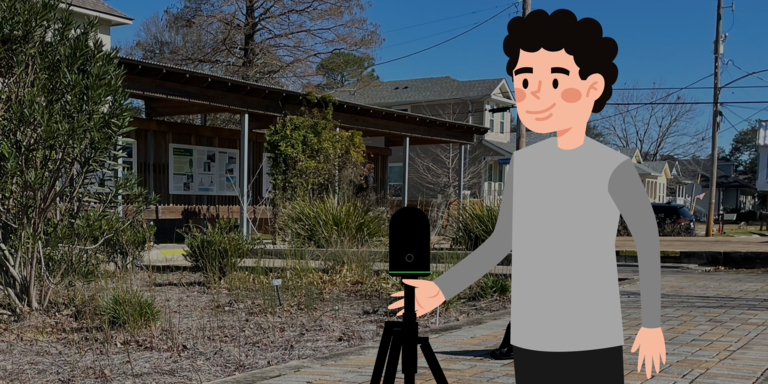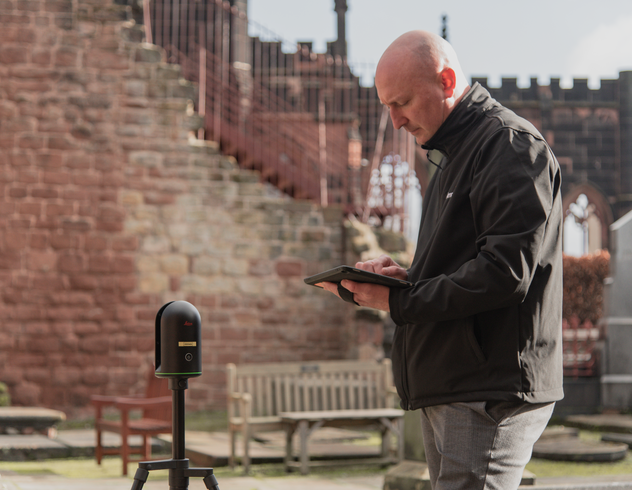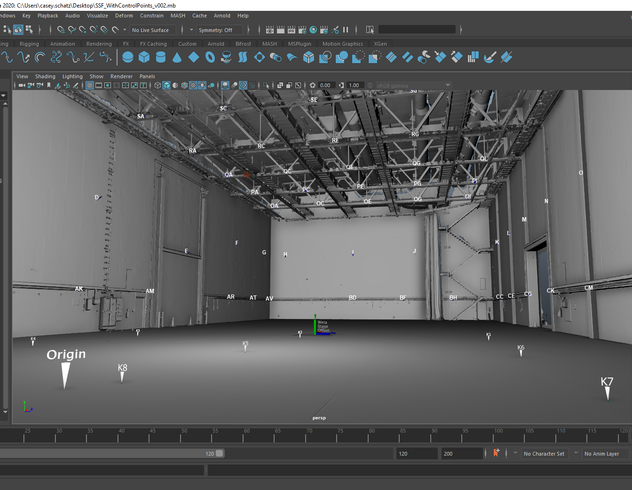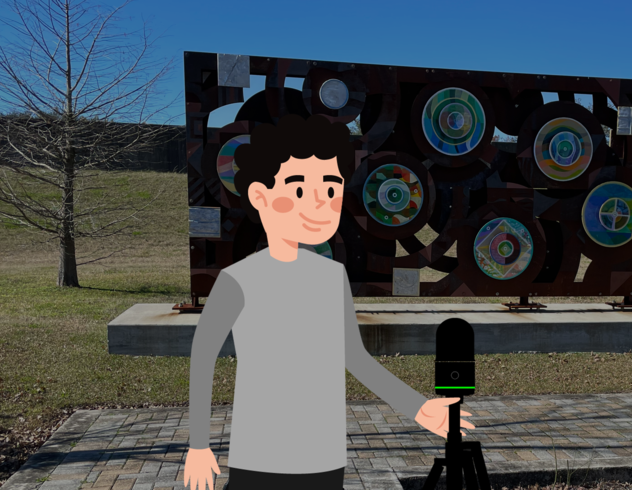Scanning the interior of my house was one thing. Dealing with environmental variables outside the house was something else entirely.
As anyone who’s experienced with 3D laser scanning knows, a controlled, static environment — say, your home after you’ve shooed your loved ones out of it for a few hours — is the simplest, most relaxed way to capture a dataset. Scanning in these conditions is “easy mode,” and life doesn’t often operate in easy mode.
There’s a world out there! And it’s full of people, job sites with heavy equipment moving in and out, public parks with curious dogs, and even more curious strangers. Not to mention the weather, nosy security guards, bicycles, cars, and oversized rodents with suspect agendas.
One day, going out to scan a local landmark, I was interrupted by an entire marching band. That sounds like the stuff of movies, but this being New Orleans, it happens more often than you might think.
More than anything, scanning in an uncontrolled environment meant that I needed to be flexible — and to have a plan.
Plan to scan
The BLK360 G1 is a speedy little scanner by the standards of terrestrial scanners. It only takes around six minutes for a high-density high dynamic range (HDR) capture, but outside of a controlled environment, those six minutes can suddenly feel like an eternity.
Having done several scans outside the comfortable confines of my home, I’ve found that what scanning in the real world is really all about is how many variables you have to contend with.
With my initial home scan, I learned a lot about how important and less headache-inducing it is later to ensure that all your doors are open, that nothing moves around unexpectedly, and to bake in more time than you think to account for changing batteries, re-scans of setups that didn’t work out quite right, etc. Leaving a highly controlled environment expands those considerations and highlights the importance of scouting the site and trying to fully plan the scan before going out there with my equipment.
These are not deep revelations to anyone familiar with scanning, but they were points I learned in real-time quickly. For instance, there were several public monuments I intended to scan, but I had to plan to scan them for times of the day there were likely to be the fewest people around. On one scan of some Italianate architecture in downtown New Orleans, this worked well, with a small group of people departing not long after I arrived, giving me free reign over the site. But in another instance, when I went to Armstrong Park to take scans, too much of the day had already gone by, and there was far too much action for me to get clean scans. I had to plan to return another day.
Scouting public sites ahead of scanning helped in that I could get a rough idea of my setups before actually conducting them, saving valuable time when low-traffic windows and good weather opened up. And as my colleague Andy Fontana pointed out, Google Maps is often just as good for evaluating a potential scan site from the office as it is to drive out there.
Best laid scans
Still, there’s that old adage about best-laid plans often going awry, and that’s certainly possible any time you’re going out to scan.
The extreme example of a full drumline replete with a dance crew isn’t something you can easily edit out of your scan, but for other scenarios, something I’ve learned is to be less fussy. Waiting around for perfect conditions while scanning in the real world is often too unrealistic, no matter how well you plan everything out. The good news is that you really can “fix it in post,” by doing multiple setups that cover similar scan areas and using the powerful tools in Leica Cyclone REGISTER 360 PLUS to clean errant objects — including pesky bystanders — out of your final scans. Practicing this freed up my concept of what was possible outside of the environments I could control and made me better at this whole “reality capture” thing.
And if something truly impassable happens while you’re out scanning, well, sometimes you’ve just got to stop and enjoy the music.
Stay tuned for Part 3 of this series and if you haven't read Part 1 check that out here.
Disclaimer: This article features the Leica BLK360 G1. Explore the expanded capabilities of the latest BLK360 model here.
![]()




